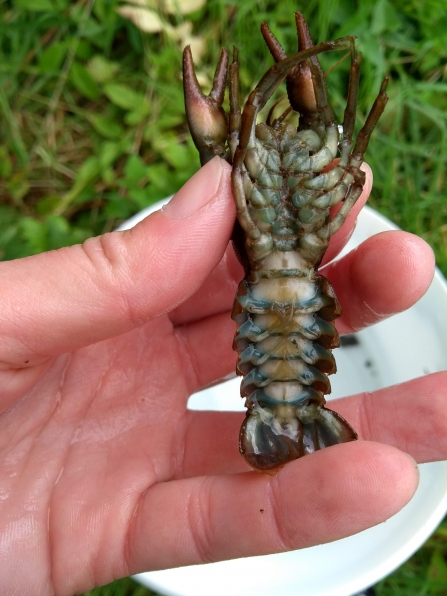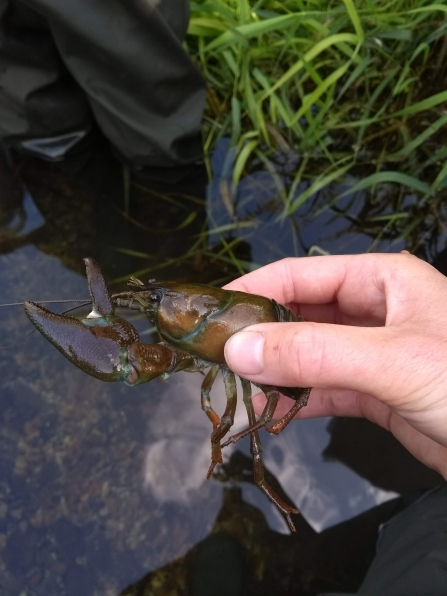Their populations are facing the twin threats of direct competition and predation by non-native crayfish (the North American signal crayfish Pacifastacus leniusculus being the biggest culprit) and ‘crayfish plague’, a disease carried by non-native crayfish species from North America to which they are largely immune, but causes mass mortality of our native species. It’s estimated that populations of our native species have undergone a 70% decline in the last 50 years.
Working with landowners and a range of partners (including the Vitacress Conservation Trust, Environment Agency, Natural England, Sparsholt College and the Bristol Zoological Society) , the Wildlife Trust’s Southern Chalkstreams Project is making sure that we can secure robust and viable populations of these engaging little creatures where they are still safe.
One of the most exciting and novel ways we are doing this is through the use of captive-rearing / breeding techniques, guided by the information gathered through our long-term survey and monitoring programmes for native and signal crayfish.
I’ve been lucky enough to be able to help out with a few aspects of this work over the last few months.
Release of captive bred juveniles
In April, we released over 100 juvenile native crayfish into to a tributary of the River Itchen, immediately upstream of the upper limit of their historic distribution. They were reared at Bristol Zoo Gardens from the eggs of wild ‘berried’ females (laden with eggs), which had been collected further downstream in previous years. Captive rearing ensures a much better survival rate for the young crayfish so wild populations can be boosted more rapidly. We also checked Artificial Refuge Traps (ARTs) and hand-searched to collect more ‘berried’ females which would be taken to Bristol Zoo Gardens for another round of captive rearing.



